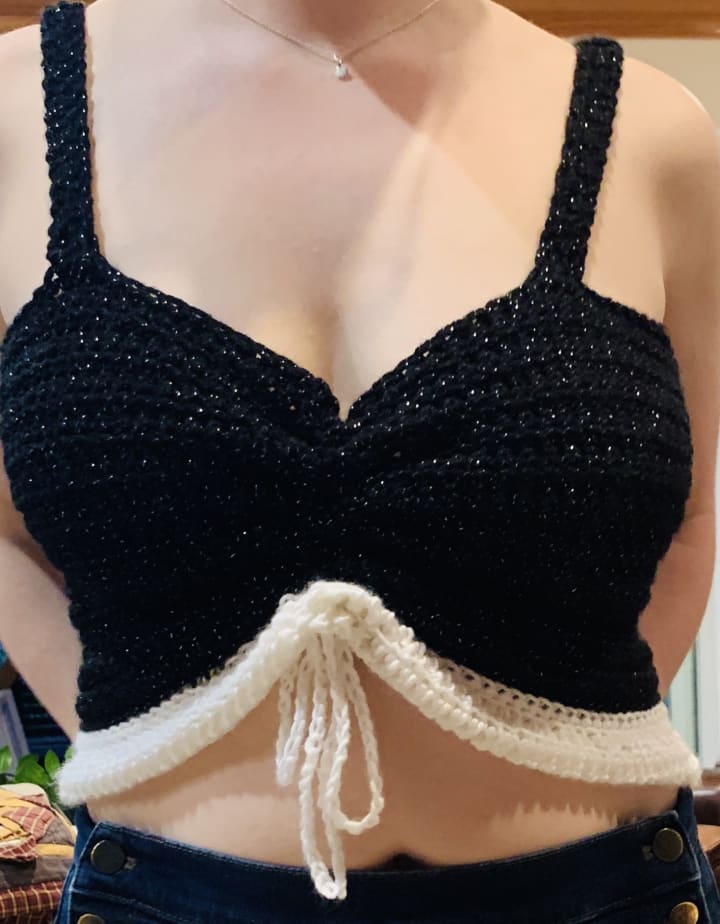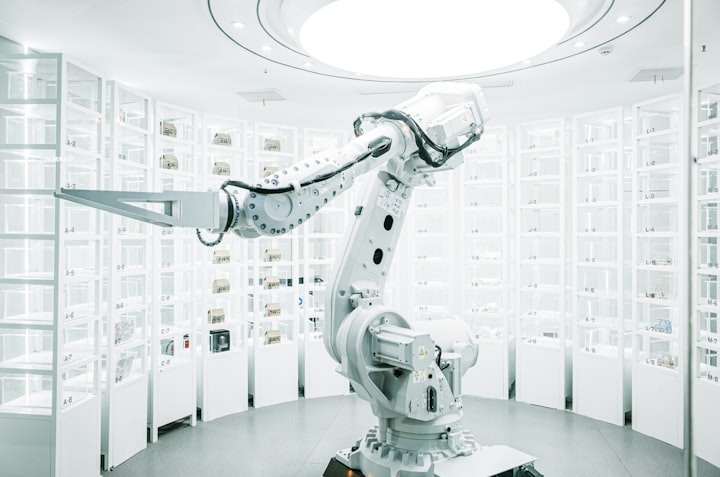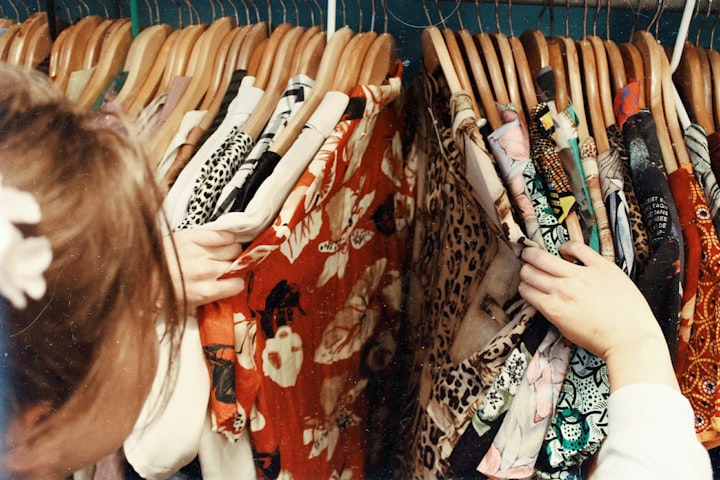Can One Person With a Crochet Hook Make a Difference?
Yes. One stitch at a time.

We live in the Information Age, a significant time in human history. Academically speaking, we are in the midst of the Fourth Industrial Revolution. This has introduced innovations which have forever changed our world and the ways in which we operate within it. While the First Revolution introduced mechanization, such as with the steam engine, the inventions and revolutions to follow enabled the ability of mass production and further advances in technology.
The Third Industrial Revolution, for example, introduced the computer and the Internet, iterating on the innovations that came before. It is the Third Industrial Revolution upon which we have built many of the current products and services that we use on a daily basis. Today, we no longer have to rely on the printing press or the pony express to send a message. Gone are the days of messengers of a bygone era, requiring days of travel on foot to transfer a simple statement. With a few simple clicks on a keyboard and swipes on a smartphone, we can now access and transfer more information than our predecessors may have communicated in their entire lives.
While these advances in technology are laudable and have arguably enhanced humanity, there are aspects of these innovations which have introduced complexities into our lives. Social media is a prime example of one of these technologies, which, built upon advancements in communications, has complicated the very act. It is surely a simple act, but is more nuanced by its lack of nuance. Take Twitter, for example. We currently have a mere 280 characters in which to express a single thought. One can argue that this is part of their business model, and that is a fair argument in itself. However, in limiting our characters, we see a limitation in context. You can’t provide all aspects of a story in a few paltry words.
This isn’t exactly a new concept. ‘Traditional’ media, or printed media, has been capitalizing on the power of the headlines and bite-sized titles for decades. Short, punchy, emotional titles grab attention. As humans, we want things that are simple to understand and relatable. When we’re scrolling through Twitter or thumbing our way through the news, we naturally want to stop at the stories which grab our attention: the high-fliers, the high-school-dropouts-turned-billionaires, the-penny-pinching-paupers-turned-philanthropists. These stories are not only incredible, but awe-inspiring. But they are misleading. These articles highlight the statistical anomalies rather than the norm. And it is easy to read one story, and think,
“Am I doing enough good in this world if I’m not running a Fortune 500 company at 20?”, or “Why haven’t I paid off my $200k in student loans and launched a nonprofit in the 3 years since I graduated, too?!”
In the Information Age, we are constantly bombarded with stories like this on a regular basis, to the point where it is easy to lose our own ground. If we constantly compare ourselves with the information with which we are consistently fed, we will never measure up. We will never seem to do enough, make enough, or even be enough, compared to the information which is provided to us in our daily feed.
So what can we do to truly make a difference in this world?
Can one person really make a difference?
If we are not born into privilege—blessed with good fortune and good health—can we ever lift ourselves out of our circumstances to think outside of our own needs, and outwardly towards the needs of another? What can I do to foster compassion and empathy in my community?
I think that this question is not a moot one, but is one worth serious consideration. Simply asking the question is an important start. It changes one’s focus from inward to outward, an essential shift if one is to impact change. It also helps one to realize that our collective needs are not so unlike our individual needs. We are not as dissimilar as we may think, despite our many perceived differences. Culture, creed, race, religion—there are many beautiful diversities in humanity. But at our core, we all fundamentally want the same things: to love, to be loved, and to do our very best to pass on the wisdom gained through our years to future generations.
So when I ask myself what I can do to foster kindness and inclusivity, I remind myself of the importance of the seemingly small things in my every day that can make a big impact. What did I do in 2020, despite a looming sense of uncertainty? Amongst other things, I volunteered as a poll worker in my local community, despite the worrying lack of sanitizer and social distancing. With the help of my osteoarthritic mother, I purchased sanitizer, taught myself how to make face masks, and showed up with both to help create an environment that was a safe space for all that desired to exercise democracy.
In 2022, how will I make my small mark on humankind? I plan to do the same in the upcoming Senate race, for all citizens, regardless of political party, as I did before.
While I have always felt that humans innately share more in common than they disagree on, nothing brings this more to the forefront than politics. It may seem paradoxical, but the political sphere is one where I have seen more unity than dissonance. We may disagree on some of the ways in which we choose to govern policy, but whether one is fiscally or socially conservative or liberal, we tend to anchor ourselves towards dictums which delineate what we perceive as the ‘correct’ choice. We all still want the same things.
But the 2022 election is but a blip in the wider sense of the world and my humble place within it. In 2022, how do I seek to foster compassion and kindness in my community? I seek to do so by focusing on the perceptively picayune. I have already actualized some of this goal by donating to a local charity dedicated to teaching young children the importance of STEM through scientific scuba diving, Dive N2 Life. While I donated under a pseudonym, and write this under a penname, I think the mere action of lending my time and money towards such a worthy cause is important.
It is unsung actions that are often of the most importance—they do not attract attention to themselves, but still impart importance.
From a larger perspective, I certainly consider how my actions can have a larger impact. I must remind myself that—despite the belief that my actions are insignificant compared to my social feeds—that my actions still have value.
Sometimes I can get so focused on the “larger” impact that my actions may have, that I forget the impact that they have at home. It is something I fear that many of us may forget on a routine basis.
One of the most essential efforts I plan to carry out in 2022 focus on my community close at heart, in my very home. I plan to continue my daily and weekly routine of leaving little notes to my loved ones. My mother is, like us all, aging. And despite her best efforts to remember to take her lunch in the morning, relishes her last moments of sleep and snoozes her alarms that reminder her to grab the leftovers in the morning. So what can I do? Reminder her.

This is one of many love notes that I write to my family on a regular basis. I am in an unusual position to be living with my mother, having been “stuck” with her during the pandemic. This has been a reminder of the importance of the fleeting things in life, of which my loved ones, myself, and we all, unfortunately are.
This time has been a challenging one for us all around the globe, and has served to remind me to value and share the lessons I have learned in my three short decades on this planet.
Perhaps out of a desperate need to create, not having the luxury of access to a full symphony to play music with in quarantine, I started to attend more to my handcraft between 2020 and 2022. I had mostly taught myself to crochet around the early 2000’s, due to my teacher (my beloved mom) being a righty, and myself a lefty. Many lopsided potholders, scarves, and doilies, were made in the process. But the years went on with the craft lying dormant in my subconscious.
In my early 20’s, I recall dating a person that called my craft a ‘waste of time’, and questioned why I even crocheted at all, as I could have been using my time in a more ‘practical’ manner. Clearly, there was a machine which could have done this quicker.
The joke is on him, by the way. Crochet remains a skill which cannot currently be replaced by a machine. It may have become ‘trendy’, and it may be sold by the local purveyor of fast fashion, but it is most assuredly created by a person that is paid a sweatshop wage in horrible working conditions. Crochet, unlike knitting, remains a skill that has not been replaced by automation.
But I digress. This is one of the few things that I have become more fascinated by in the new year. I have reignited my interest in handcraft, despite the design challenges and requirements to essentially write my own patterns as a lefty, and intend on sharing my passion for creation with my fellow creators.
In finding my community of creators, I have witnessed the theft of intellectual property of smaller, independent entrepreneurs in handcraft, only to see their items recreated at a large scale, for a portion of the original price. As a hobbyist handcrafter, I thankfully do not have to depend on this handcraft for my livelihood. But for my fellow creators, my yarn yearns for justice.
In 2022, I hope to shed more light on this injustice of misappropriating another’s property, and on the importance of sustainable fashion.
Many of the companies which are appropriating another’s designs as their own, are in the ‘fast fashion’ business. This is an industry which contributes more annual carbon emissions than all international flights and maritime shipping combined. While their business model may have its place, certainly for those with small coffers, their ethics deserve a re-examination.
How this lefty crocheter plans to make crochet more accessible in 2022
As a lefty, I plan to create educational tools for my crocheting comrades who are also in their ‘right mind’. It is easy to feel invisible as a lefty creator, even with access to the Internet and tutorials designed to teach crochet. There are a rare few lefty crocheters, and even fewer who produce quality content. This is a huge problem when it comes to crocheted clothing, as handedness is especially important for seaming one’s work, and ensuring the right and wrong sides come together for a complete, well-fitting garment.
But handedness is almost never mentioned in blog posts, videos, or books, and the authors and content creators simply create under a right-handed bias without acknowledgement for those who do not fit that mold. I hope to challenge this bias with a series of videos and blog posts on how to crochet left-handed, the current status of crochet in fashion, and the importance of protecting small creators’ intellectual property (IP).
I have recently started creating and wearing my own designs, but not without many hurdles along the way.
The pieces below, designed and crafted by me, took several hours of trial and error. When you buy a trendy crop top like this or halter for $5, just think of what that means per hour for the average sweatshop worker...



For many consumers, there is an ignorance regarding what goes into producing these types of pieces. Many believer they are made by a machine. For many independent creators too, there is a lack of awareness around the issue of stolen patterns and clothing designs. These take many painstaking hours to create and tweak to get right, particularly for bespoke clothing. To have them cheaply recreated by fast fashion companies with subpar materials, shoddy craftsmanship and no credit given to the creator or profit-sharing, is nothing less than disgraceful.
Sadly, for those creators who are aware of the growing problem, they often lack the resources to take the fight to these companies. Good legal defense can be hard to find, and expensive to afford. For those who are lucky enough to have access to counsel will inevitably encounter the legal grey area surrounding IP in fashion law in the United States, despite the regulations being better defined in the European Union. In 2022, I plan to shed more light on this issue, and hope we will all join in with our hooks, needles, and our dollars. There is a place for all creators in the marketplace, and it should be inclusive to all, both large and small.
One person can make a difference in their community, be it physical or digital, and I hope to make my small mark in 2022.
About the Creator
E.K. Daniels
Writer, watercolorist, and regular at the restaurant at the end of the universe. Twitter @inkladen






Comments
There are no comments for this story
Be the first to respond and start the conversation.